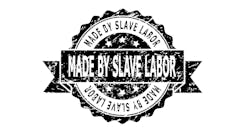Executives are concerned about their ability to deliver value propositions that satisfy employees and a subsequent inability to retain and recruit talent according to Gartner, Inc.’s latest Emerging Risks Monitor Report. The survey of 254 senior executives across industry and geography was conducted in 4Q21.
“Talent risks are particularly concerning to executives because they are being driven by multiple root causes,” said Matt Shinkman, vice president with the Gartner Risk and Audit Practice, in a statement. “High levels of voluntary unemployment and new expectations among the workforce are fueling an already hot labor market."
The top five risks as identified by the study are:
1. Postpandemic Talent 78%
2. Supply Chain Disruptions 73%
3. New Ransomware 72%
4. Endemic COVID-19 61%
5. Inflationary Pressures 57%
Organizations continue to struggle with questions related to a timeline for returning employees to the office and developing new working models, including remote and hybrid, to satisfy their workforce. The potential consequences of an inadequate talent strategy this year could lead to multiple organizational disruptions.
A historically high quits rate indicates that employees are willing to pursue better value propositions, particularly related to flexibility and pay. Constant turnover can lead to a degradation of workplace culture and loss of institutional knowledge. Finally, organizations may also face a lack of skilled workers to deliver on strategic initiatives, such as digital transformation, if unable to attract and retain high potential employees.
“The positive aspect of talent risk is that organizations have more direct ability to influence positive outcomes than many other types of risks they face,” said Shinkman. “By focusing on innovating their workforce management of hybrid and remote workers, offering employees more flexibility when possible, and expanding their recruitment approaches, organizations can develop a competitive talent strategy that meets the challenges of the moment.”
Supply Chain Disruptions, Inflationary Pressures Persist
Supply chain disruptions have been a persistent concern for executives over recent quarters. Executives continue to express concerns about rising costs and supplier contraction because of a fragile and stressed global supply chain. They also face loss of market share to competitors with more robust distribution or the ability to procure goods at lower prices.
“Persistent supply chain issues have helped push broader inflationary concerns to the forefront of executives’ minds,” Shinkman said. “Constrained supply is meeting heightened demand in many sectors, threatening organizations with a loss of labor, goods and materials to competitors willing to pay a higher price. If above-trend inflationary pressures persist, market share consolidation by the largest firms, as well as the threat of a broader economic cooldown, could become tangible risks this year.”



